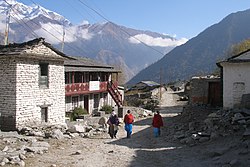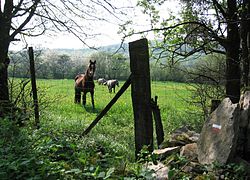Africa
Lesotho
- 3 Ranges Trail: 288.3 km (179.1 mi) a hiking trail that passes three mountain ranges, namely Thaba Putsoa Range, Central Range and ends at Drakensburg Range. It starts at Lesotho lowest point, at the confluence of Makhaleng and Senqu and ends at the country's highest point, Thabana Ntlenyane (3482m).
Namibia

- Fish River Canyon: 90 km (56 mi) route in the ǀAi-ǀAis/Richtersveld Transfrontier Park
South Africa
- Otter Trail: 44 km (27 mi) section of the Garden Route along the Cape coast
- Drakensberg Grand Traverse: rugged 205 km (127 mi) trek in KwaZulu-Natal
Egypt
- Sinai Trail: 250 km (160 mi) thru-hike from Nuweiba to Mount Catherine
Uganda
- Sir Samuel and Lady Florence Baker Trail: 575 km (357 mi) trek through northern Uganda [1]


















